Yes, I thought this was a quiet sunday afternoon little pastime project avoiding the things that I really had to do (but were less fun). But since I'm at it anyway here we go, electrical tape, last set of measurements on this subject:

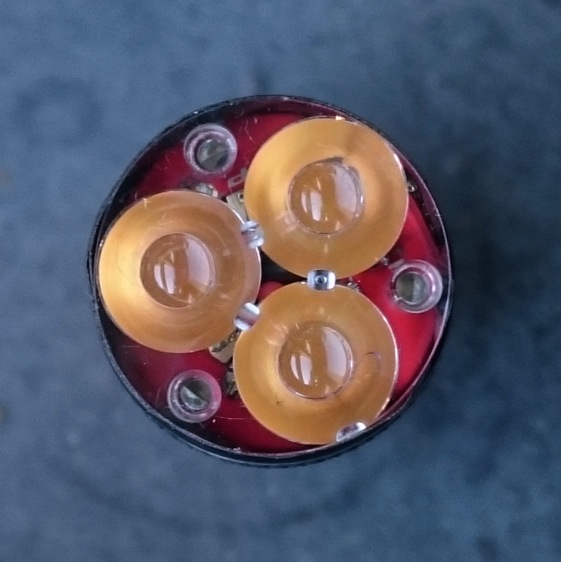
You can see in the top view photo that the electrical tape is not touching the little reflectors (undisturbed yellow reflection)
Here's how it looks in the dark:
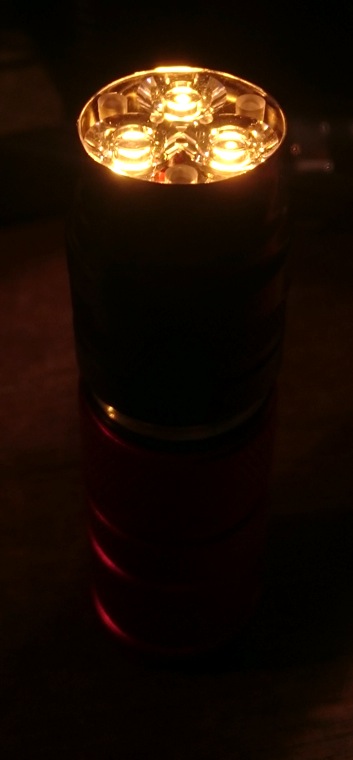
The numbers (the flashlight from the OP was disassembled again ![]() ) :
) :
Bare leds: 241 lumen. I remeasured it and the output is consistent :-)
Carclo 10507 added, the side packed with electrical tape: 194 lumen.
This is a 19.5% light loss from just the optic so just 80.5% efficiency. I looked up the specsheet for the 10507 and it claims 88.7% for the XP-E and 86% for the Rebel. It sounds logical optically that the bigger the die, the less efficient the optic because a bigger part of the object is not in the best imaged middle.
This also implies that the flashlight head, blocking part of the optic, just eats up 3.1% of the light, so that is not as dramatic as it may look like.
I had another thought: the flashlight from the OP has gen.2 Oslon Square leds which have a funny-shaped dome that perhaps messes with the optic?:
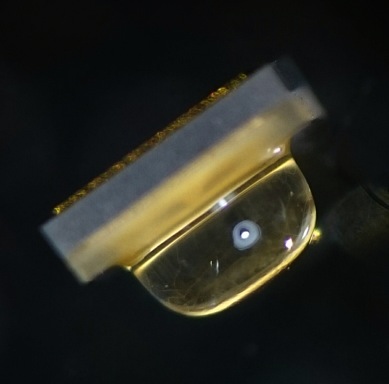
I have another (coincidentally also red coloured) S2+ triple mod with 3000K Nichia 219C leds. I wondered if the 10507 has a different efficiency for those. So I did the same electrical tape measurement with the 219C light as was done with the Oslon Square light. I chose also a steady low mode for this.
Results:
Bare leds: 82.5 lumen
Carclo 10507 added, the side packed with electrical tape: 69.4 lumen
So that is 84.1% efficiency, quite a lot better than the 80.5% from the Oslons! And actually the beams from the two lights would have given a clue already, the 219C beam has a narrower tidier hotspot than the Oslon Square beam (left Osram Oslon Square beam, right Nichia 219C beam, the Oslon beam was a bit brighter, but you can still see the difference, and better in reality) :
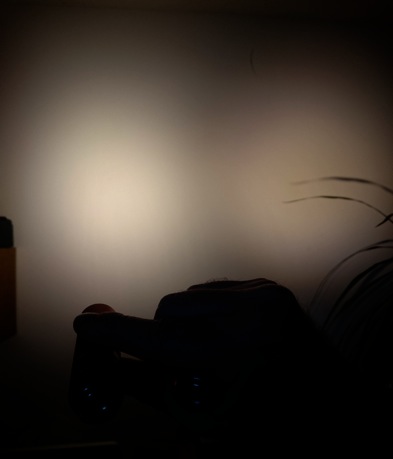
Could it be that the XP-L Hi with its messy beam through the 10507 has an efficiency even under 80%? Well, I'm not going to find out, I've done enough of these measurements now ;-)
Edit: aaarrggh, messed up the last beamshot, forgot that the Oslon Square light had its frosted optic back. Had to change that for a clear 10507 and here is the real comparison:
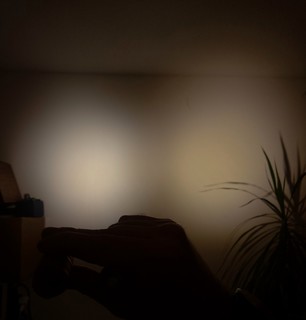
So the Oslon actually gives a tighter hotspot than the Nichia 219, but still more light is lost through the optic. It is getting too complicated for me now ;-)